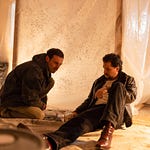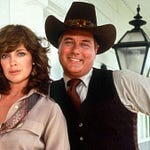
This week I’m joined by Anthony Penta, director of We Kill for Love, a documentary/film essay about the erotic thriller and its place in the history of cinema. Drawing parallels to film noir and gothic romances, among other genres, Penta traces not only the artistic legacy of We Kill for Love but also the role they played in the early days of home video rentals and pay cable. Hundreds of films melding sex, violence, and sexy violence were produced, yet many of them have all but disappeared, critics dismissing them as little more than softcore pornography and viewers moving on to other forms of titillation. The erotic thriller lives on, but you’ll be a little surprised to see precisely where.
We Kill for Love is available on VOD now. Make sure to rent it after the kiddos have gone to bed, as this is a return to the world of Cinemax After Dark. But I don’t want to leave you thinking it’s lurid: We Kill for Love is a tasteful, informative, and empathetic look back at the genre filled with new interviews with the actors, actresses, producers, and directors of the genre, as well as the critics and academics attempting to impart it with a bit more respectability. I didn’t know I needed a two-and-a-half-hour documentary about erotic thrillers in my life, but I’m glad I have it.
As always, if you enjoyed this episode or learned something about the business of film, please share it with a friend!














Erotic Thrillers: Unsung Heroes of Home Video